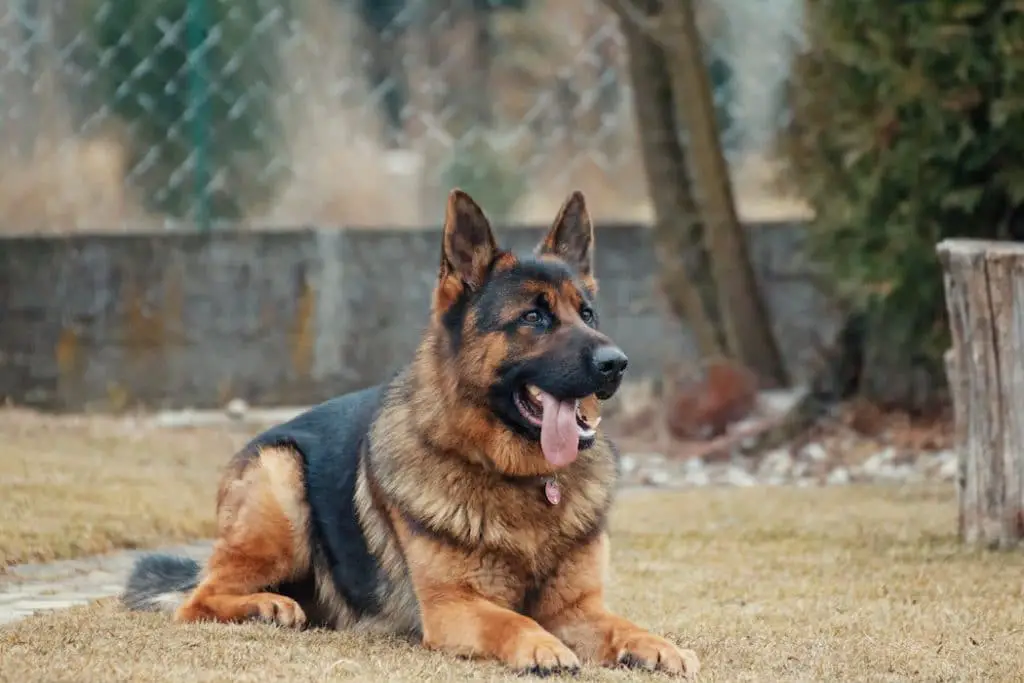
If you’re considering bringing a German Shepherd into your life or already share your home with one of these magnificent creatures, buckle up – you’re in for quite the adventure. These dogs aren’t just pets; they’re a lifestyle commitment that will transform your world in the most remarkable ways. Let’s dive into everything you need to know about this extraordinary breed.
A Dog of Many Names: Understanding the German Shepherd’s Heritage
German Shepherds Dogs (GSDs) are tremendously loyal dog that burst onto the scene in 1899 from Germany, where they’re known as Deutscher Schäferhund (pronounced ʃɛːfɐˌhʊnt). Across the pond in Britain and Ireland, they’ve traditionally been called Alsatians. You might also hear them referred to as:
- Allemand
- Berger
- DSH
- GSD
- Schäferhund
- Shepherd
- Wolf Dog
German Shepherd Physical Characteristics: More Than Just Good Looks
Size and Structure
German Shepherds are medium to large-sized dogs with a distinctive proportion of being slightly longer than tall (ideal ratio: 10 to 8.5). According to AKC standards:
- Males: 24–26 inches in height & 66–88 lbs in weight
- Females: 22–24 inches in height & 49–71 lbs in weight
The Distinctive GSD Look
These charismatic dogs sport a long, square-cut muzzle with powerful jaws, a domed forehead, and a black nose. Their medium-sized brown eyes radiate intelligence and confidence, while their large, erect ears stand like radar dishes, always alert and ready for action. Add in that famous bushy tail, and you’ve got one impressive-looking canine!
Coat Varieties and Colors
GSDs rock a two-layered coat that comes in medium or long varieties (though long-coated GSDs are like finding a four-leaf clover – pretty rare!). Their color palette includes:
- Black German Shepherd
- Black & Gold
- Red & Black
- Black & Silver
- Sable
Most sport black body-markings and masks, while some lucky pups come in more unusual shades like blue, pure-black, white, liver, or sable.
Temperament and Personality: What Makes Them Tick
German Shepherds are the Swiss Army knives of the dog world – versatile, reliable, and impressively capable. Their personality traits include:
- Alert and watchful (nothing gets past these four-legged security systems)
- Confident and courageous (they’ll brave anything to protect their loved ones)
- Intelligent and quick to learn (they’re basically canine Einstein)
- Loyal to a fault (once you’re their person, you’re their person for life)
- Curious and eager to explore (they’re natural investigators)
Gender Differences
While every dog is unique, there are some general tendencies:
- Males often play the role of gentle giants – typically more relaxed and openly affectionate
- Females tend to be the CEO of the household – more protective and sometimes pickier about their human friends
Exercise and Activity: These Dogs Don’t Do Couch Potato
Let’s be crystal clear: German Shepherds need exercise like fish need water. We’re talking about:
- 1-2 hours of dedicated exercise daily (minimum!)
- Mix of physical activities:
- Long walks or jogs
- Off-leash running in secure areas
- Fetch and frisbee sessions
- Swimming (many GSDs are natural water lovers)
- Mental stimulation:
- Training sessions
- Puzzle toys
- Scent work
- Agility courses
Space Requirements
While GSDs can adapt to apartment living (surprise!), they thrive with:
- A securely fenced yard
- Room to run and play
- Access to outdoor spaces
- Regular outdoor adventures
Training and Socialization: Building Your Dream Dog
German Shepherds aren’t just trainable; they’re training enthusiasts! However, success requires:
Early Socialization (Critical Period: 3-16 weeks)
- Exposure to different people, animals, and environments
- Positive experiences in various situations
- Careful introduction to new stimuli
- Regular social interactions
Training Approach
- Start early (like, yesterday)
- Use positive reinforcement
- Be consistent and firm
- Establish clear boundaries
- Consider professional training classes
Common Training Challenges
- Can be stubborn when bored
- May test boundaries
- Need ongoing mental stimulation
- Can develop unwanted herding behaviors
- May become protective without proper socialization
Grooming: Managing That Magnificent Coat
Prepare yourself: German Shepherds are professional shedders. They don’t just shed; they release their coat with artistic flair. You’ll need:
Regular Maintenance
- Daily brushing during shedding seasons (spring and fall)
- Weekly brushing during regular periods
- Bath every 6-8 weeks (unless they find something delightfully stinky to roll in)
Essential Tools
- Undercoat rake
- Slicker brush
- High-quality dog shampoo
- Patience (lots of it)
Health and Wellness: Keeping Your GSD in Top Shape
Life Expectancy
German Shepherds typically live 9-13 years, though many happy pups exceed this with proper care.
Common Health Issues
Prevention and awareness are key for:
- Hip and elbow dysplasia
- Bloat (potentially life-threatening)
- Degenerative myelopathy
- Von Willebrand’s disease
- Exocrine Pancreatic Insufficiency
- Allergies and skin conditions
Preventive Care
- Regular vet check-ups
- Hip and elbow scoring for breeding dogs
- Genetic testing when available
- Proper diet and exercise
- Weight management
Nutrition: Fueling Your Four-Legged Athlete
Puppy Feeding Guidelines
Puppies need frequent meals:
- 4-6 weeks: Introduce wet food alongside mother’s milk
- 8 weeks: Begin transition to quality dry puppy food
- 3-6 months: 3-4 meals daily
- 6-12 months: 2-3 meals daily
Adult Feeding
- 2 meals daily
- High-quality protein sources
- Appropriate calorie intake based on activity level
- Fresh water always available
Cost Considerations: Budgeting for Your GSD
Initial Costs
- Purchase/adoption: $500-$3000
- Initial medical care: $200-500
- Basic supplies: $200-400
- Training classes: $50-200 per session
Ongoing Expenses
- Food: $60-100 monthly
- Regular vet care: $200-400 annually
- Pet insurance: $30-70 monthly
- Grooming supplies: $100-200 annually
- Toys and enrichment: $20-50 monthly
Legal Considerations and Living Arrangements
Before bringing home your GSD, consider:
- Breed restrictions in your area
- Homeowner’s/renter’s insurance requirements
- Rental property limitations
- Local leash laws and dog park regulations
Senior Care: Growing Old Gracefully
As your GSD enters their golden years (typically around 7-8 years), they’ll need:
- More frequent vet check-ups
- Adjusted exercise routines
- Joint support supplements
- Modified diet
- Possibly mobility aids
- Extra comfort accommodations
Making the Decision
German Shepherds are extraordinary dogs that offer unwavering loyalty, intelligence, and companionship. However, they’re not for everyone. The ideal GSD owner is:
- Active and outdoorsy
- Committed to training and socialization
- Home frequently
- Willing to invest time and resources
- Ready for a 10+ year commitment
- Prepared for regular grooming
- Able to provide proper exercise and stimulation
Remember: A well-cared-for German Shepherd isn’t just a pet – they’re a loyal partner, dedicated protector, and faithful friend who will enrich your life in countless ways. If you can provide the care, attention, and lifestyle they need, you’ll be rewarded with one of the most remarkable companionships the canine world has to offer.

Ben, our resident wordsmith, finds inspiration in the playful world of pups, bringing to life enchanting tales that resonate with every dog lover’s heart.





